Dubai Metro Timing: Your Complete Guide to Commuting
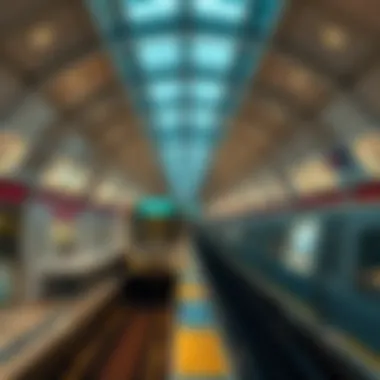
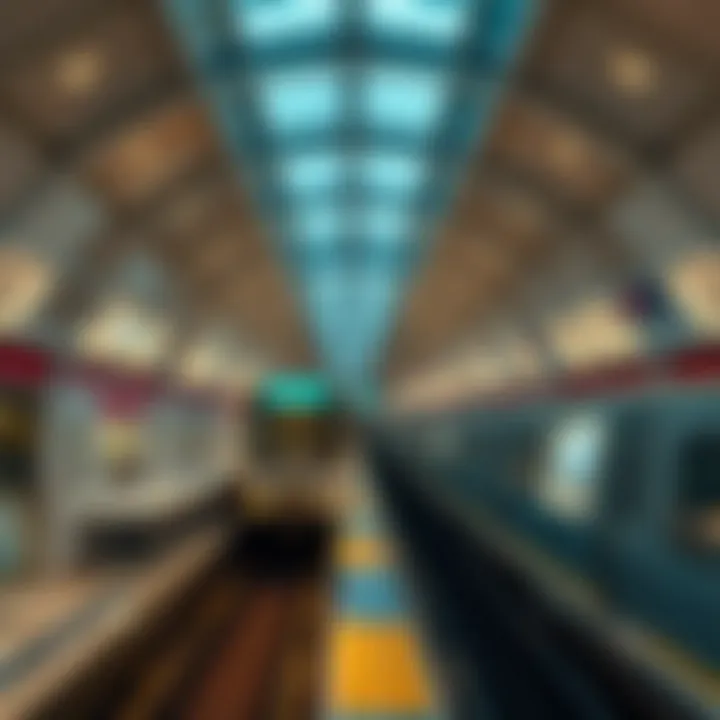
Intro
Navigating through the bustling city of Dubai often comes down to one pivotal aspect: timing. The Dubai Metro is not just a mode of transport; it’s a lifeline connecting various urban zones and a testament to the city’s commitment to modernity and efficient mobility.
With its sleek design and punctual services, the metro caters to both residents and tourists alike. The significance of understanding the operational timings of the Dubai Metro extends beyond mere curiosity; it has implications for daily routines, appointments, and leisure activities. Whether you’re rushing to a board meeting in the heart of the business district or planning a casual outing to the expansive Dubai Mall, knowing when the metro operates will significantly enhance your commuting experience.
Additionally, the role of the metro in Dubai's urban landscape cannot be understated. As the city continues to grow, the demand for streamlined transport systems intensifies, making this rail system essential for accommodating the rising population and traffic congestion.
So, as we unpack the various services, peak hours, and special scheduling, let’s delve deeper into how the Dubai Metro stands as a pillar in the metropolis’s ambitious urban planning.
Preface to Dubai Metro
The Dubai Metro has become an indispensable component of the city’s transportation framework, playing a crucial role in shaping urban mobility. This rapid transit system is not just about swift travel; it symbolizes a significant transformation in how residents and tourists navigate the bustling cityscape of Dubai. Understanding the basics of the Dubai Metro system is essential for anyone using it.
Overview of the Dubai Metro System
The Dubai Metro, first launched in 2009, is an impressive feat of engineering. Spanning around 90 kilometers, it connects various districts through two main lines: the Red Line and the Green Line. The automated system runs entirely on elevated and underground tracks, offering a smooth ride while pedestrians watch the skyline unfolding outside the window. Commuters can access several key areas, including shopping malls, business districts, and recreational spots.
More than just a means to get from point A to point B, the Dubai Metro is a classic example of modern urban infrastructure. It contributes significantly to Dubai's vision for sustainability and efficient public transportation.
Importance of Public Transport in Dubai
Public transport in Dubai, including the Metro, plays a vital role in alleviating traffic congestion. This city, known for its rapid development and large expatriate population, has faced significant mobility challenges. Hence, an efficient transport network ensures that both residents and visitors can experience the city without the hassle of extensive traffic jams.
The Metro system also encourages the use of public transport, enhancing eco-friendliness by reducing reliance on personal vehicles. With convenience and affordability at its core, the Dubai Metro not only supports economic growth but also fosters a sense of community among the diverse inhabitants.
"Public transport in Dubai is not merely a convenience; it is a necessity that sustains urban life."
In summary, the Dubai Metro stands as a testament to the city’s forward-thinking mindset. Understanding its operation and significance can enhance the commuting experience for first-time users as well as seasoned riders. The following sections will delve deeper into the operational aspects, practical tips, and cultural relevance of the Metro system.
Tomorrow's Metro Timing
Understanding the Dubai Metro's timing is crucial for a seamless commuting experience. Whether you’re a daily traveler or a first-time visitor, knowing when the metro operates can save you time and help you plan your journey effectively. As a vital part of Dubai's public transport system, the metro ensures that thousands of commuters reach their destinations promptly. The timings are designed to accommodate the diverse needs of residents and tourists alike, providing flexibility and accessibility.
Standard Operating Hours
The standard operating hours for the Dubai Metro are set to optimize convenience for all users. Typically, the metro opens at 5:00 AM and closes around midnight during weekdays, from Sunday to Thursday. On weekends, which are Friday and Saturday in the UAE, the metro often operates from 10:00 AM to 1:00 AM. These timings reflect a thoughtful consideration of public interest and are aimed at accommodating various schedules from early risers to night owls.
When planning your journey, take note of these hours:
- Weekdays (Sunday to Thursday):
- Weekends (Friday and Saturday):
- 5:00 AM to 12:00 AM
- 10:00 AM to 1:00 AM
This schedule allows a generous window for commuters to rely on the metro for their transportation needs.
Changes During Weekends and Holidays
Adjustments to the metro's operating hours during weekends and public holidays might surprise some commuters. Generally, the Saturday opening time shifts to a later hour, which can lead to a longer wait time for those heading out early. Moreover, certain holidays can prompt even greater alterations. For instance, during Eid celebrations or national holidays, the metro sometimes extends its hours to accommodate increased passenger flow. For your planning purposes, here’s a brief rundown on how weekends and holidays affect train timings:
- Early Arrival: If you prefer an early start on Fridays or Saturdays, remember that the metro doesn't kick off until 10:00 AM.
- Special Occasions: Events around Eid or National Day often see extended hours, yet these can vary annually, so it's wise to check closer to the date.
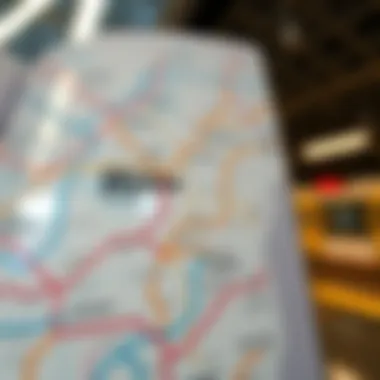
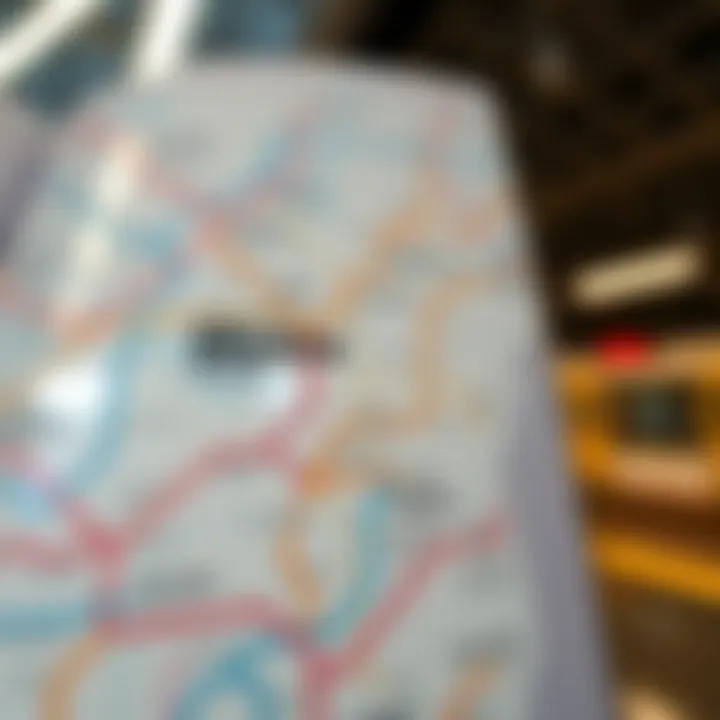
Exceptional Circumstances and Adjustments
Life is unpredictable, and the metro system reflects this reality with its adaptability in exceptional circumstances. During unforeseen events such as maintenance work, special events, or emergencies, the operating hours and services of the metro may be adjusted accordingly. Such changes can include:
- Temporary line closures or service interruptions.
- Scheduled maintenance leading to earlier closing times.
- Extended hours during popular events, concerts, or festivals.
To stay informed about these adjustments, commuters should make it a habit to visit the official Dubai Metro website or follow relevant transport updates on social media platforms like Facebook or Reddit. Keeping an eye on these resources helps ensure you won’t be caught off guard when timing changes do occur.
"Proper planning prevents poor performance."
Ultimately, being aware of the Dubai Metro's timing mechanics not only enhances your travel experience; it also helps you navigate the city more effectively, making way for a journey that is as smooth as possible.
Metro Lines Overview
The Dubai Metro is a lifeline for many, creating a crucial framework for both the daily commuter and the tourist exploring the city. Understanding how the metro lines are structured, along with their routes, gives insight into their wider impact on movement in the bustling emirate. A detailed analysis of the metro lines contributes to a clearer view of how efficient public transport can enhance urban living. This section deep dives into the operational aspects of the Red and Green Lines, along with future expansions, making it essential for anyone navigating life in Dubai.
Red Line: Key Routes and Stations
The Red Line is one of the two main metro lines in Dubai, spanning approximately 52 kilometers and connecting key areas of the city. Beginning at Rashidiya, it weaves through downtown Dubai and ends at UAE Exchange. This line serves major destinations, which include:
- Dubai International Airport: Perfect for travelers, this station connects directly to Terminal 1, making it easy for arrivals and departures.
- Burj Khalifa/Dubai Mall: One of the busiest stations, it provides access to the awe-inspiring Burj Khalifa and the expansive Dubai Mall.
- Jebel Ali: Connecting to industrial zones, it supports both business and leisure activities.
Commuters rely on the Red Line for its efficiency, particularly during peak hours, with trains arriving every 2-3 minutes. The strategic placement of stations along this line plays a critical role in reducing traffic congestion in the city.
Green Line: Key Routes and Stations
The Green Line, while shorter at around 23 kilometers, serves equally vital areas of Dubai. It runs from Al Qusais to Dubai Creek, linking residential neighborhoods with bustling business zones. Important stations along this route include:
- Al Ghubaiba: A hub for various bus services, making connections seamless for residents and visitors.
- Dubai Healthcare City: Connecting the healthcare facilities ensures that patients and visitors can easily access medical services.
- Dubai Museum: A cultural hotspot, this station allows easy access to local history and tradition.
Riding the Green Line complements the Red Line for commuters, especially those headed toward the more traditional areas of Dubai. The two lines intersect at several points, enhancing the connectivity and convenience for all users.
Additional Future Extensions
Looking ahead, the Dubai Metro plans to expand its reach even further. Notable future extensions include:
- Route 2020: An extension of the Red Line stretching to the Expo 2020 site. This will ensure easy access to one of the most discussed global expos and its surrounding areas.
- Further Green Line expansions: Planned expansion eastward to connect more suburban areas as the city's population continues to grow.
- Integration with other modes of transport: Collaboration with tram networks and enhanced connections to airports are also in the pipeline, promising a more holistic approach to public transport.
Overall, these extensions will not only support population growth but also enhance the ease of travel in Dubai, making the metro system an even more integral part of urban mobility.
"The Dubai Metro is not just a mode of transportation; it’s a testament to the city’s commitment to innovation and efficiency in public transport."
As the metro continues to evolve and adapt, it offers a glimpse into the future of transport in Dubai and shows how public systems can work harmoniously with urban development.
Ticketing and Fare System
The ticketing and fare system of the Dubai Metro plays a critical role in ensuring an efficient commuting experience. It allows riders to navigate the vast network with ease and provides options that cater to various needs and budgets. Understanding this system not only helps in planning your journey but can also significantly affect how much you spend on travel, making it an important aspect for residents and visitors alike.
Types of Tickets Available
When using the Dubai Metro, you’ll encounter several types of tickets designed to accommodate different commuting needs:
- Silver Card: This is the most common type of card, suitable for regular users. It’s rechargeable and can save you money compared to single journeys. You will pay a nominal fee when purchasing the card itself, plus the fare per journey.
- Gold Card: A step up from the Silver Card, this one provides access to the premium cabins located at the front of the trains—ideal for those who prefer a more luxurious commuting experience. The initial cost is higher, but many find it worth the extra cash for the added comfort.
- Nol Paper Ticket: These are a great option for occasional travelers. You can buy them for a single journey or for a return trip. Just note that they can’t be recharged, so they are best for quick, one-off trips.
- Monthly Pass: For the daily commuter, a monthly pass is invaluable. This option allows unlimited travel on the metro for a set price, saving both time and money. It’s ideal for those who frequent the metro regularly.
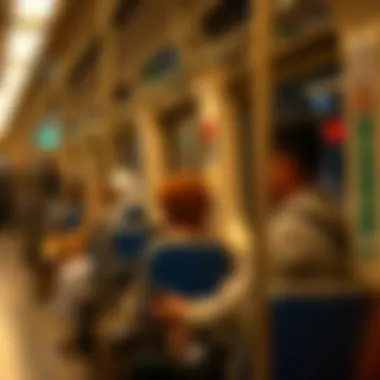
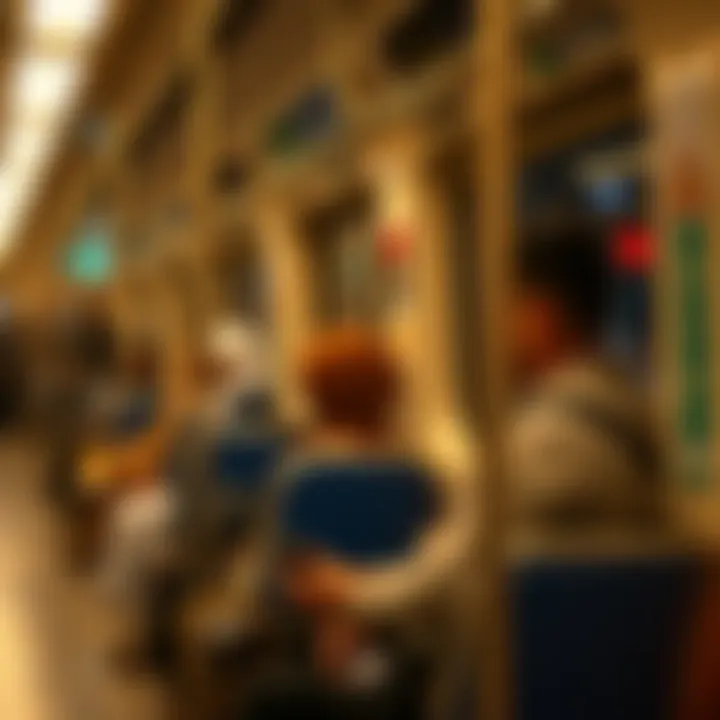
How to Purchase Tickets
Purchasing tickets for the Dubai Metro is designed to be a streamlined process. Here’s how you can go about it:
- At Metro Stations: Tickets can be bought from automated ticket kiosks or at the ticket counters. The kiosks offer multiple language options, making it user-friendly for tourists and locals alike.
- Online: You can also purchase tickets through the official Dubai Metro app. This is particularly convenient, allowing you to manage your travel on the go. Simply download the app, set up an account, and follow the prompts to buy your ticket.
- Retail Outlets: Additionally, select retail outlets across Dubai are authorized to sell Nol Cards and tickets. This gives you flexibility in where to buy, making it a convenient option for people on the run.
- Mobile Payments: Modern solutions also allow fare payment via certain mobile wallets, streamlining the ticketing process even further.
"Understanding how to navigate the ticketing system is crucial for managing your travel budget and ensuring smooth journeys throughout the city."
Understanding Fare Zones
The fare system is based on different zones within Dubai. Here’s how it works:
- Zone System: Dubai Metro operates using a zone-based fare model. The city is divided into zones, and the fare you pay depends on how many zones you travel through during your journey.
- Fares by Zones:
- Within One Zone: This is often the cheapest option, ideal for short or single-stop trips.
- Two Zones: If your journey crosses over into a second zone, expect a slight increase in fare.
- Three Zones or More: For longer distances, crossing multiple zones will incur the highest fare. It’s essential to be aware of the zones involved in your routing to avoid any surprise costs.
This fare zone information is crucial when planning your journey as it helps in budgeting your travel expenses accurately. By knowing the zones, you can better calculate how much your trip will cost ahead of time, preventing any confusion or unexpected charges at the end of your ride.
Navigating the Metro
Navigating the Dubai Metro can initially seem like a daunting task, especially for first-time users. However, understanding the system can significantly enhance your commuting experience. The metro offers a unique blend of efficiency and convenience, catering to a diverse user base, from daily commuters to tourists exploring the city. This section delves into the various aspects you should be aware of while maneuvering through the metro network, ensuring you maximize its benefits.
Understanding Metro Stations and Signage
When you step into one of the Dubai Metro stations, it's essential to grasp how the infrastructure is organized. Stations are designed to be user-friendly, with clear signage in both English and Arabic. This bi-lingual approach ensures that everyone can understand the directions.
Each station is equipped with necessary amenities, such as ticket vending machines, customer service desks, and waiting areas. The vibrant colors and distinct designs of station signs highlight their names and connections. The use of digital displays throughout the stations provides real-time information about train arrivals, which can greatly aid in planning your journey precisely.
Pro Tip: Familiarize yourself with the metro map before starting your trip. It showcases all the lines and stops, making it easier to figure out your destination.
Another key aspect is safety. Stations are periodically monitored by security personnel, ensuring a secure environment for passengers. Additionally, entry and exit points are clearly marked, minimizing any confusion.
Safety Protocols and Guidelines
Safety is paramount when using public transport. The Dubai Metro maintains stringent safety protocols to create a secure environment for passengers.
- Stay behind the safety line as indicated at station platforms. This line helps prevent accidents near the tracks.
- Mind the gap when entering or exiting the train. The distance between the train and platform can sometimes be misleading due to high-speed arrivals.
- Emergency exits are well-signposted, and staff are always ready to assist in any unforeseen situations.
- No eating or drinking is allowed within the trains and stations, maintaining cleanliness and ensuring a pleasant experience for all commuters.
- In case of emergency, remaining calm and following the instructions displayed on screens is crucial. Metro staff are trained to handle various scenarios effectively.
By adhering to these guidelines, you contribute to a safe and respectful environment for yourself and fellow commuters.
Navigating the Dubai Metro not only helps you move around the city quickly but also offers an insight into the urban infrastructure of Dubai, showcasing its commitment to providing effective public transportation. Whether you're heading to work, exploring the sights, or commuting for leisure, being aware of how to navigate the metro can turn an average trip into a seamless part of your day.
Enhancing Your Commute Experience
A well-thought-out commute is vital for navigating the fast-paced environment of Dubai. As the city continually evolves, the need for an efficient transport system like the Dubai Metro becomes even more apparent. Understanding how to enhance your commuting experience is essential not just for personal comfort, but it can also save time and reduce stress, which is invaluable for both residents and visitors alike.
Tips for Avoiding Peak Hours
Dubai Metro operates on a schedule that can be very busy, especially during peak hours. Usually, these times are early in the morning when people are heading to work, and again in the evening as they are returning home. If you want to dodge the crowd, consider the following:
- Early Bird Gets the Worm: Try to catch the train either very early in the morning or after 9:30 AM. The calm of the metro before the rush hours feels almost like a different world.
- Lunchtime Escape: The hours from noon to 2 PM often see fewer commuters, making it a good time to ride if it fits into your schedule.
- Track Special Events: Be aware of local holidays or events happening in Dubai. During festivals or major exhibitions, public transport can get quite crowded as many people take to the streets.
Avoiding peak hours not only allows for a more pleasant journey but also improves overall efficiency when planning travel itineraries around the city.
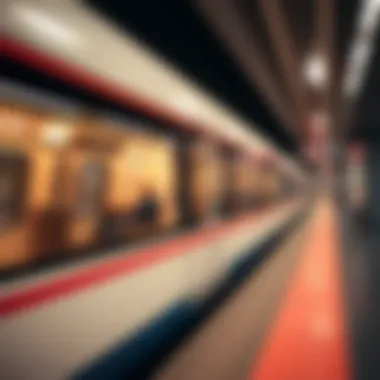

Best Apps for Metro Commuters
In today's digital age, technology can significantly simplify our lives, including commutes on the Dubai Metro. Here are some essential apps that provide valuable information and services for commuters:
- RTA Smart Taxi: This app is perfect for booking rides when the metro isn't the best option. The service also complements the metro by ensuring you can reach your final destination without a hitch.
- Dubai Metro App: This official application gives real-time information about train arrivals, line statuses, and route planning. It's a must-have for anyone relying on the metro.
- Google Maps: Although not metro-specific, it offers accurate transit timelines by integrating the metro schedule with other modes of transport.
Utilizing these applications effectively can keep you informed and help optimize your traveling experience on the metro.
"The key to enhancing your commute isn’t just about being on time, but about making each journey as smooth and enjoyable as possible."
Overall, enhancing your commute experience is about strategic planning and leveraging available resources. With the right mindset and tools, navigating the Dubai Metro can become a stress-free part of your day.
Cultural Significance of Dubai Metro
The Dubai Metro, beyond being a mere transportation system, holds profound cultural significance for the emirate. It acts as a vital vein running through the diverse urban landscape, influencing both the growth of the city and the lifestyle of its inhabitants. As Dubai continues to evolve at a breakneck pace, the metro is not just a convenience; it is a symbol of the city’s ambitious vision and its drive towards a sustainable future.
The Role of Metro in Urban Development
Urban development in Dubai has witnessed substantial transformation, with the metro being a cornerstone of this evolution. By connecting various neighborhoods, tourist spots, and commercial centers, it helps in alleviating road congestion and reducing reliance on private vehicles.
A few key impacts of the metro on urban growth include:
- Enhanced Accessibility: The metro enhances mobility for residents and visitors alike, making it easier to access employment opportunities and social amenities. Employees can reach their workplaces from different parts of the city with minimal hassle.
- Real Estate Development: Areas surrounding metro stations have seen a surge in real estate investments. Properties near metro stations typically appreciate faster, making them attractive for investors and homeowners alike.
- Public Space Creation: With reduced traffic, there’s more room for pedestrian-friendly environments and public spaces. Parks, cafes, and shops sprout around metro access points, making city life more vibrant.
In essence, the metro system has spurred developments that are shaping Dubai’s urban framework, reflecting a contemporary city where public transport is prioritized.
Metro as a Reflection of Dubai's Modernity
The Dubai Metro exemplifies the emirate's commitment to modernization and innovation. Its construction marked a significant shift towards eco-friendly public transportation, aligning with Dubai’s sustainability goals. The aesthetic of the metro stations, with designs incorporating traditional art and modern architecture, echoes the blend of cultures present in the city.
Key aspects that illustrate the metro’s role as a beacon of modernity include:
- Technological Advancements: The metro is equipped with state-of-the-art technology, ensuring a smooth and efficient transit experience. Smart ticketing systems and mobile applications for real-time updates showcase Dubai’s dedication to incorporating technology into everyday life.
- Cultural Integration: The metro not only transports but also educates. Stations often feature art installations and local culture exhibitions, connecting riders to the rich heritage of the UAE. This cultural narrative serves to reinforce the identity of a city that respects its roots while striving forward.
- Global Standards: By adhering to international standards of safety and service, the Dubai Metro sets a benchmark for other cities in the region, demonstrating what is possible with innovative urban planning.
The cultural significance of the Dubai Metro is multifaceted. It represents progress and ambition, underscoring the importance of sustainable development while enhancing the everyday life of its residents and visitors. As Dubai continues to grow, so too does the narrative woven into the fabric of its public transport system, making it a focal point in the city’s dynamic story.
"The Dubai Metro is not just about transportation; it's about integrating the city's modern identity with its rich cultural past."
For more information about urban developments in Dubai, you can visit Dubai's Urban Planning page. The integration of public transport into city identity can also be explored on en.wikipedia.org.
End
In wrapping up our exploration of the Dubai Metro's timing and services, it's crucial to appreciate the multifaceted nature of this essential transport system. The Dubai Metro not only serves as a vital connection for residents and tourists, but also highlights the city's commitment to fostering sustainable urban mobility. With a calculated approach to timings, the metro accommodates the bustling lifestyle of Dubai while providing crucial services to its inhabitants.
Recap of Essential Information
Throughout this guide, we have delved into the significance of the Dubai Metro in the daily lives of its users. Early sections highlighted the operational hours and alterations during weekends and holidays, ensuring commuters are well-equipped to plan their journeys. Important facets included details on ticket types, purchasing options, and the fare zones that determine costs based on travel distances. By understanding these core components, users can navigate the system efficiently.
Moreover, we explored strategies to enhance the commuting experience, such as avoiding peak hours and utilizing apps designed for metro users. The cultural significance of the metro within Dubai's urban tapestry cannot be overstated—it serves as both a reflection of modernity and a catalyst for growth.
Future of the Dubai Metro System
Looking ahead, the Dubai Metro system is set to expand further. There are plans for new lines and additional stations, which promise to enhance connectivity throughout the city. As Dubai's landscape evolves, the metro will likely adapt, introducing modern technology and possibly more eco-friendly practices to further align with the city's vision for sustainability.
The future, marked by ongoing developments, suggests that as the city grows, so will its transportation network—making life easier for both residents and visitors. Thus, the Dubai Metro offers a glimpse into how a city can evolve while prioritizing accessibility and modernity—a perfect blend for the dynamic lifestyle of its inhabitants.
"The Dubai Metro is more than just a mode of transport; it is a bridge between tradition and modernity, a pulse of the city's life."
For more detailed insights and updates, feel free to check official sources such as RTA or Wikipedia.















